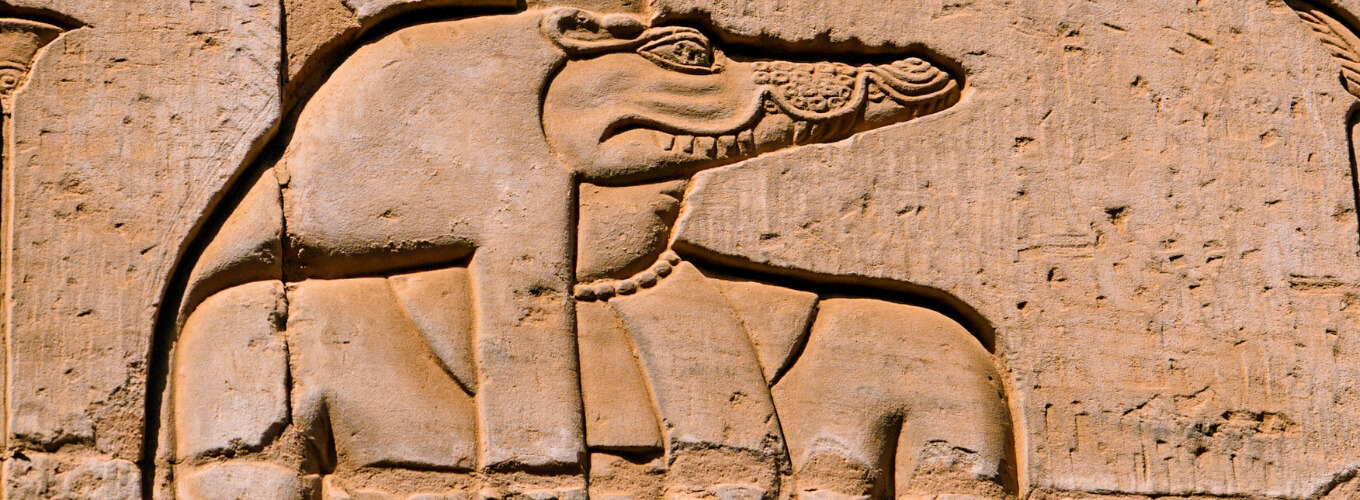Egypt in January offers travelers one of the most delightful experi...

The Nubian Village near Aswan offers a vibrant and immersive experience for travelers seeking a deeper connection with Egypt’s living heritage. Tucked along the banks of the Nile River, these villages are home to the Nubian people—descendants of one of Africa’s most ancient civilizations. Their colorful homes, warm hospitality, and distinct traditions make the villages a compelling destination for anyone exploring southern Egypt.
Visiting a Nubian Village is unlike visiting a typical tourist site. Here, culture is not displayed—it is lived. Nubians continue to practice customs passed down through generations, from their language to their arts, music, and food. These villages are not reconstructed for show—they are active communities where families live, work, and welcome visitors into their everyday lives.
The architecture is one of the first things that captures the attention of travelers. Homes are painted in bright shades of blue, orange, and pink, often decorated with symbols from Nubian folklore. The round, domed roofs and intricate wall paintings reflect both practical design and cultural identity. Many homes open their doors to travelers, offering a glimpse into traditional Nubian life.
The Nubian language is a key part of the community’s identity. Unlike Arabic, it is an oral language passed on through storytelling, songs, and conversation. For visitors, hearing the local language adds to the authenticity of the experience. While most Nubians speak Arabic and many understand English, they take pride in preserving their native tongue.
Historically, the Nubian people lived along the Nile in southern Egypt and northern Sudan. However, the construction of the Aswan High Dam in the 1960s led to the relocation of many communities, as rising waters from Lake Nasser submerged traditional lands. Despite the displacement, the Nubians have maintained their cultural integrity, rebuilding their villages and adapting to new realities without losing their heritage.
Walking through a Nubian Village is a feast for the senses. The colors of the homes reflect not just personal taste but also traditional symbolism. Blue is believed to protect against evil, while geometric designs often represent fertility, prosperity, or spiritual guidance.
Many homes also serve as galleries, displaying handwoven textiles, carved wooden pieces, and jewelry made with local stones. These crafts are often produced by women and sold directly to visitors, offering an authentic alternative to mass-produced souvenirs.
The scent of Nubian spices fills the air—cumin, hibiscus, fenugreek, and dried mint are staples in their cooking. Guests are often invited to share a cup of hibiscus tea or a traditional meal, which may include dishes like grilled fish, lentils, and fresh flatbread. This generosity and warmth reflect a culture centered around community and hospitality.
Music is an essential part of life in a Nubian Village. Percussion instruments such as hand drums, tambourines, and traditional lutes accompany songs that celebrate births, weddings, and seasonal festivals. Many songs are centuries old, passed down from ancestors who once ruled along the southern stretches of the Nile.
In the evenings, guests may be treated to live performances featuring local musicians and dancers. These performances are not staged as tourist attractions but are often part of real community gatherings. Participating in a dance or simply enjoying the music is one of the most memorable ways to connect with the village’s spirit.
Nubian society places strong emphasis on family and community support. Homes are often shared by extended families, and daily routines involve cooperation across generations. Women play a central role in maintaining both household traditions and community cohesion. In addition to raising families, they are deeply involved in artistic production, culinary heritage, and education.
Visitors may have the opportunity to engage in craft workshops, henna painting, or cooking lessons led by local women. These experiences not only support the local economy but also offer deeper insight into the daily rhythms of village life.
Most travelers reach the Nubian villages by boat from Aswan. The journey itself is part of the experience, offering views of palm-lined shores, desert hills, and small islands dotted along the Nile. Felucca rides or small motorboats can be arranged easily from the city’s riverbanks.
The most commonly visited villages include Gharb Soheil and Siou Village. Gharb Soheil, in particular, has become known for its vibrant market, colorful homes, and welcoming families. Despite an increase in tourism, the village has retained its authentic character and sense of pride.
Many tour operators in Aswan offer guided visits that include transportation, meals, and the chance to meet local families. These tours are ideal for travelers who want a structured visit, but independent exploration is also possible. Whichever approach you choose, respect for the local culture is essential—dress modestly, ask before taking photographs, and be open to new experiences.
Traveling to a Nubian Village offers the chance to support responsible and sustainable tourism. Many families rely on income from hosting guests, selling crafts, and offering tours of their homes. By choosing local guides and purchasing handmade items directly from artisans, visitors can contribute to the community in a meaningful way.
It’s also important to recognize the challenges these villages face. As tourism grows, there’s a delicate balance between preserving cultural heritage and adapting to new economic pressures. Thoughtful travelers play a crucial role in maintaining that balance by engaging respectfully and supporting ethical travel practices.
Education has become a central focus for many Nubian communities. Schools have been established to teach both Arabic and Nubian languages, helping younger generations remain connected to their heritage while gaining the tools to thrive in modern Egypt.
Some villages offer cultural centers where children can learn traditional music, dance, and storytelling. These centers often welcome visitors, offering programs and presentations that showcase local talent. Supporting these initiatives helps ensure that Nubian culture continues to flourish for generations to come.

A typical visit to a Nubian Village begins with a boat ride that provides scenic views of Aswan and its surroundings. As you arrive at the shore, colorful murals and welcoming smiles greet you. A local guide—often a resident of the village—will take you on a walking tour through narrow streets lined with painted walls and open courtyards.
Inside a local home, you may be offered a drink or snack, followed by a conversation about daily life. The relaxed pace of village life allows for spontaneous interactions. You might join in a game with local children, watch a grandmother prepare bread, or sit with an elder who shares stories of Nubian ancestry.
The visit may conclude with time to explore the local market, enjoy traditional music, or relax in a shaded courtyard overlooking the river. Every visit is unique, shaped by the people you meet and the connections you make.
For photographers, the Nubian villages are a dream destination. The vivid colors, expressive faces, and dramatic natural light create ideal conditions for capturing memorable images. Artists and writers also find inspiration here, drawn by the authenticity and beauty of a community that continues to live in harmony with its environment.
While photography is welcome, it’s important to ask permission before photographing individuals, especially children. Showing respect for privacy ensures that the community remains open to visitors and that interactions are based on trust.
A visit to a Nubian Village offers far more than a sightseeing excursion—it provides a chance to witness a culture that has endured for millennia. While the temples and tombs of ancient Egypt tell stories of pharaohs and gods, the villages of the Nubian people tell stories of survival, pride, and continuity.
This cultural journey adds depth and richness to any trip to Egypt, offering insights into traditions that remain alive and evolving. For travelers seeking meaningful experiences beyond the well-trodden tourist path, the Nubian villages offer a rare and rewarding opportunity.
Including a Nubian Village in your itinerary is easy when visiting Aswan. The villages can be visited as a half-day or full-day trip, and they pair well with other nearby attractions such as the Temple of Philae, the Unfinished Obelisk, and the Aswan Botanical Garden.
Whether you’re planning your journey independently or through a travel agency, incorporating a visit to these vibrant communities adds emotional depth and cultural context to your Egyptian adventure. Many travelers say their time in a Nubian village was one of the most memorable parts of their trip.
We offer tours to Egypt’s most famous destinations such as the Pyramids and Sphinx in Giza, Karnak Temple and Luxor, Valley of the Kings, Sharm El Sheikh and Hurghada for beaches and diving, and Alexandria.
We provide organized tours, luxury hotel and resort bookings, comfortable transportation services, experienced tour guides, and activity ticket bookings such as diving, desert safaris, and Nile cruises.